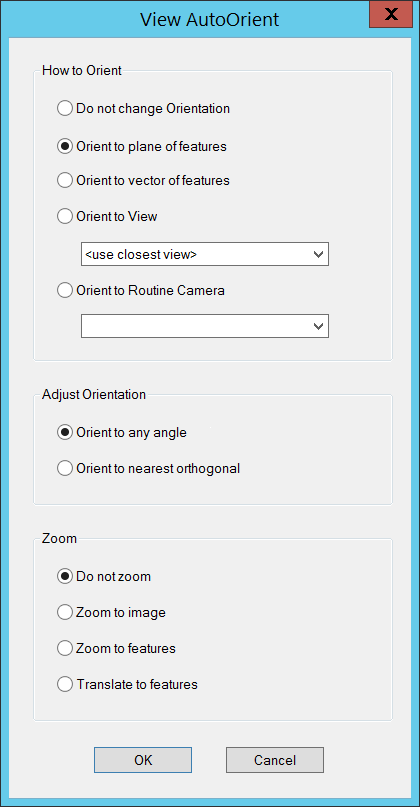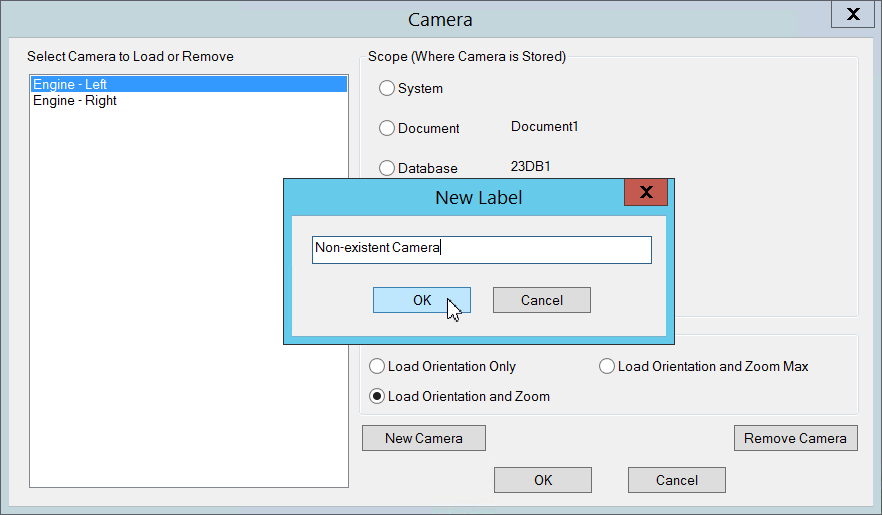
A View annotation with a 3D DataSource image can be set up to automatically adjust how the 3D model is rotated and/or zoomed to best display the data currently loaded by the Views' DataSource.
The Auto Orient option is enabled in the View tab of the annotation properties.

Once the option is enabled, the View AutohOrient dialog can be accessed
through the right-click menu on the View Annotation: ReportTweak>Auto-Orient .
.
The view will not change from the manual orientation saved in the template. This is the default setting.
This option looks at all of the XYZs of the points loaded, calculates a best-fit plane and moves the model to show the part according to that plane.
This option looks at all of the IJKs of the points loaded, averages those vectors and then moves the model to show the best view of that average. For examples, if you load the points on a door CM4D will look at all the features and determine what is the best way to look at all of those features.
Sets the view to the same orientation as another view on the same sheet.
This option adjusts the model to show a view that is configured for a specific Routine. These views are saved as Routine Cameras.
 Reference
Reference
For
API calls to create or change Routine Cameras, see the topics QaCamera
and QaCameraXML.
Reports with Views set up this way will automatically adjust the part image based on the Routine data that is loaded. In this way, you can create a single report that loads different data but still shows specific views regardless of which part is loaded.

This dropdown list is populated with all Routine Cameras available for all loaded Routines. If a Camera does not exist for a Routine, you can type a label into the dropdown.
When setting up a View, you can assign a Routine Camera to the Auto Orient even if the camera does not exist. Once the Routine Camera is created, the View will begin orienting to that set Camera. If the entered Camera does not get created, the View will not automatically orient.


Cannot be used in conjunction with the 'Orient to View' option.
Does not modify the orientation; retains the original angle in the View. This options only looks at the vectors of the loaded data.
This option looks at the six planes and adjusts the model to 'snap' to the one that is closest to the loaded features. The six planes are top, bottom, left, right, above and below.
Cannot be used in conjunction with the 'Orient to View' or 'Orient to Routine Camera' options.
The zoom of the View is not altered.
Fits the model to fill the view frame. This differs from 'Zoom Max' in that it only fits the part image, not the loaded features.
Fits the loaded features to fill the view frame. This is the same as the 'Zoom Max' function.
Moves the view (horizontally/vertically) in the annotation frame to show the features on the model. The rotation of the model is not changed.